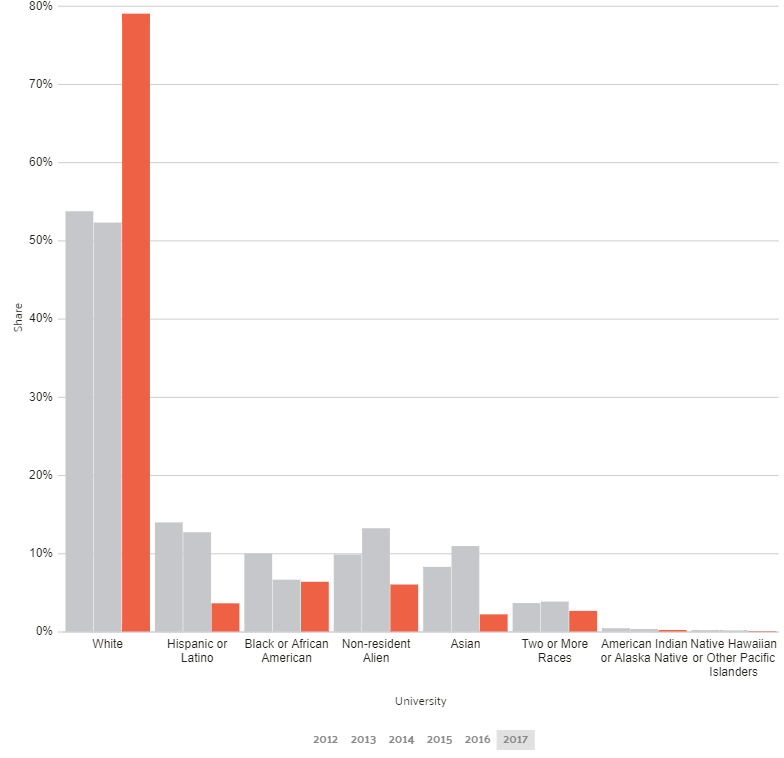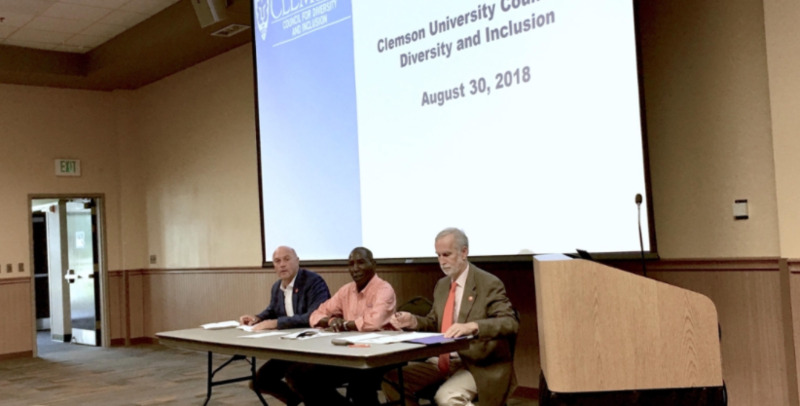Where Are We Now?
It has been almost sixty years now since Harvey Gantt first began his fight for a place on Clemson's campus, and almost seventy since the United States Supreme Court ruled that it was unconstitutional, and therefore unlawful, to segregate public educational institutions based on race. But as we have seen, the fight did not end with Gantt's admission. African American students and community members have continued that fight for years since then in an attempt to earn fair and equal treatment and to feel safe and welcome on Clemson's campus and in the community.
So where are we now? Have we truly achieved the goals of the men and women who have done so much to help Clemson learn to foster the environment of acceptance and diversity it today claims to hold? As of 2017, only six percent of Clemson's enrolled students identify themselves as Black or African American, whereas the percentage of African American people in the Upstate area of South Carolina as a whole is significantly higher, at around seventeen percent. One would assume, then, that the number of Black students at Clemson University would be somewhat higher.
It appears, though, that the University is not unaware of the importance of continuing to uphold the legacy of those "first" African American students, and continuing to work harder to foster an environment of inclusion and diversity.
In 2018, the Council for Diversity and Inclusion was formed, with commissions designed to help students of all races and ethnicities, genders and sexual orientations, and levels of ability and disability feel welcome and included in many areas as they can, using "the guidance and insight from members of the community [to] help shape the narrative for inclusive excellence at Clemson."

